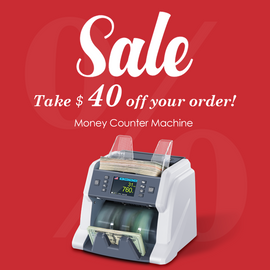In a world increasingly inclined towards digital transactions, the choice between paying with cash or credit cards might seem trivial. Yet, this decision can have far-reaching implications. Let’s start with an engaging story about a $50 bill and its journey through a small town, illustrating the impactful nature of cash transactions.
The Tale of the $50 Bill
In a charming little town, every store had its own unique story to tell. Among these was a tale of a $50 bill, an unassuming piece of currency about to embark on an enlightening journey.
Our story starts in a quaint, family-run restaurant, where a customer decided to settle their bill using the $50 note, instead of swiping a credit card. This single act set into motion a series of events that highlighted the impact of cash transactions. The restaurant owner, in turn, uses the same bill to pay for their laundry service. The laundry owner then uses it to pay for a haircut at the neighborhood barber, who later spends it at a grocery store for his weekly supplies.
Throughout its journey, this $50 bill remains exactly that – fifty dollars in value, fully serving each person who uses it for payment. Not a cent is lost or diminished; its worth remains constant, fulfilling its purpose time and again.
Comparison with Digital Payments
Now, let's reimagine this scenario with a digital payment.
The customer at the restaurant pays with a card. For this transaction, the bank charges a 3% fee, approximately $1.50, paid by the seller.
This fee recurs with every subsequent transaction made by the restaurant owner, the laundry service, the barber, and so forth.
After 30 transactions like these, the original value of $50 dwindles to just $5, with $45 lost to bank fees. Each digital payment chips away at the amount, gradually transferring a significant portion to financial institutions.
Consider a local boutique with $60,000 in monthly sales. If 90% of these sales are made through card transactions, the boutique would face about $1,800 in fees every month, amounting to over $21,000 annually – a substantial hit to their revenue.
Advantages of Using Cash
This simple yet profound story of the $50 bill underscores the importance of choosing cash over credit cards. Now, let's delve into the specific reasons why this choice can be beneficial:
- Avoiding Debt and Interest: Using cash means you're not accumulating debt or interest. Credit card usage often leads to accrued interest, especially if balances aren't paid off monthly. This can make purchases more costly over time.
- Budget Control: Cash transactions help in adhering to a budget. When using cash, you're more aware of your spending, making it easier to avoid impulse purchases and manage finances effectively.
- No Hidden Fees: Cash payments eliminate the various fees associated with credit cards, such as annual fees and late payment fees. Plus, they can be more merchant-friendly, as some businesses incur additional charges for processing credit card payments.
- Widespread Acceptance: Cash is universally accepted. In certain situations, especially in smaller businesses or specific markets, cash might be the only accepted payment method.
In conclusion, the journey of the $50 bill is more than a story; it's a lesson in the economics of payment methods. By choosing cash, particularly for smaller transactions, we support our local businesses and contribute to their growth. This choice, while seemingly small, carries a significant impact, emphasizing the need for mindful spending and the broader implications of our everyday decisions.







